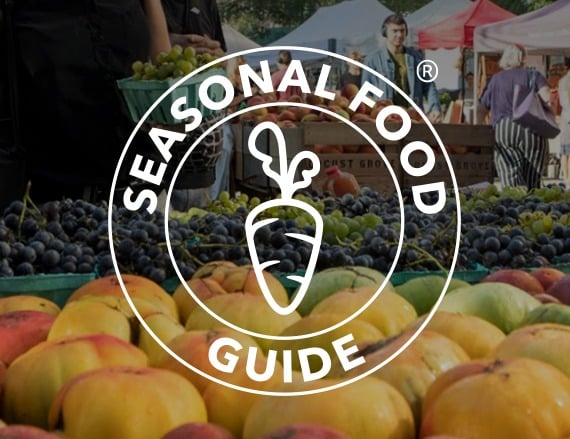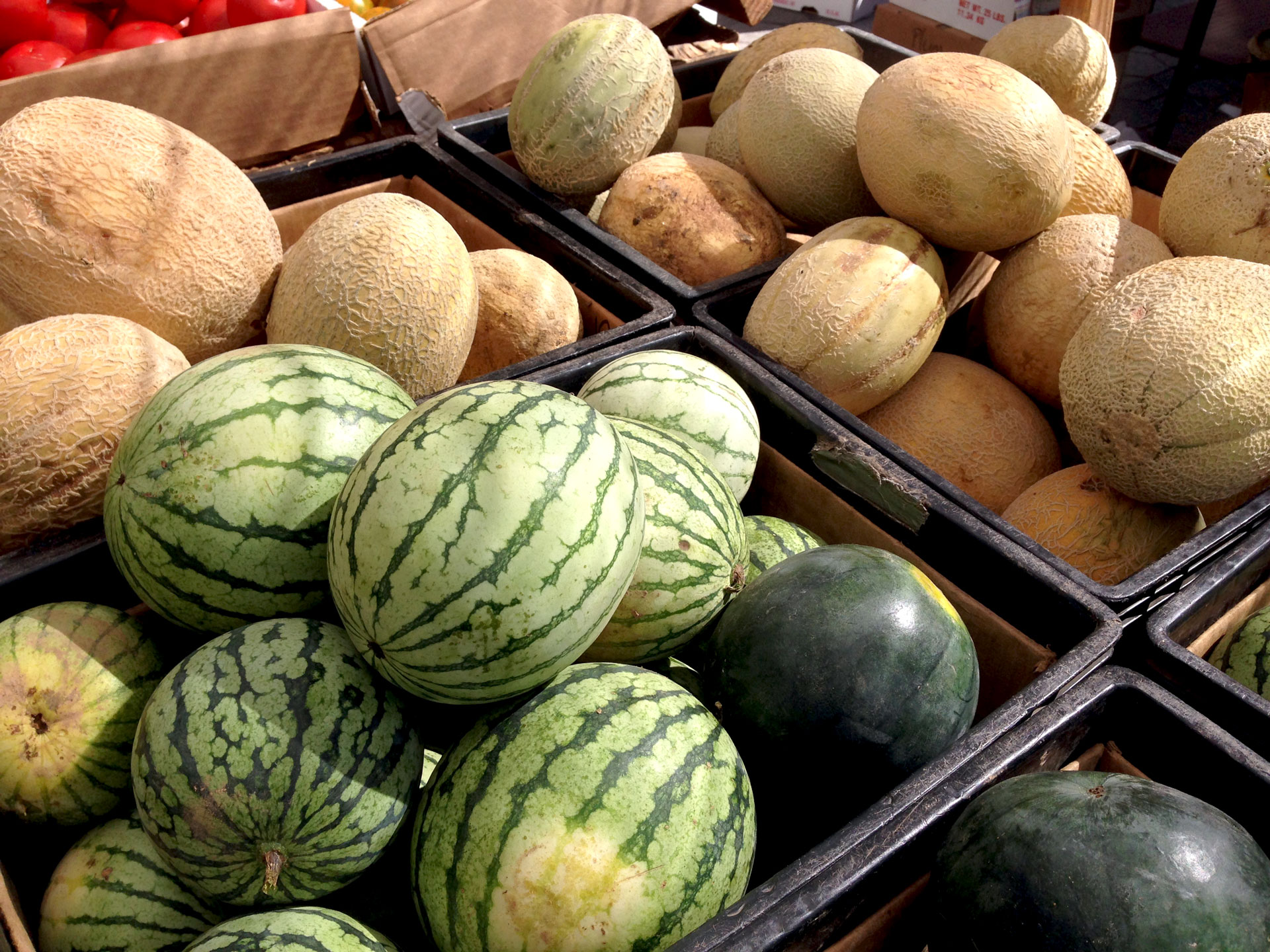Real Food Encyclopedia | Watermelon
With its crisp, sweet flesh, the modern watermelon (Citrullus lanatus) is a far cry from its closest wild relatives, which are small and bitter with wild seeds. While watermelon relatives are found throughout Africa and the Middle East, researchers have discovered that modern varieties descend from melons originally domesticated in Northeastern Africa, in modern-day Sudan and Egypt.
Watermelons were an early introduction to North American agriculture, though it is unclear whether they were first brought to the continent by European colonists or by enslaved West Africans. Along with okra and black-eyed peas, the watermelon is inextricably linked to African American foodways. As African culinary scholar Jessica Harris writes in High on the Hog, the watermelon was used as a symbol to stereotype African Americans: “some of the most virulently racist images of African Americans produced in the post-Civil War era involve African Americans and the fruit.” However, the fruit is also a centerpiece of Juneteenth celebrations, which commemorate emancipation from slavery.
Today, watermelons have since become established as one of the most popular fruits in the U.S., and are a universal symbol of summertime bounty.
Fun facts about watermelon:
- Who knew watermelon seed spitting would inspire world records? The longest distance a seed has traveled is 75 feet, two inches, a Guinness World Record set in 1995.
- Oklahoma loves the watermelon so much it decided in 2007 to recognized it as the official state vegetable, which is a little odd, given that it’s a fruit (although related to vine vegetables such as cucumber and squash).
What to look for when buying watermelon
A ripe watermelon should be firm and heavy. Traditional wisdom says that tapping a watermelon is the best way to determine its quality, and a good watermelon should give a dull thud when tapped. A higher pitch might indicate that the fruit is dense and unripe inside.
The underside (aka “soil side”) should be slightly yellowish, too. It means the fruit has been spending time in the dirt getting ripe. While it can be difficult to see through the stripes, the paler parts of the watermelon should be closer to yellow than white for fruit that’s fully ripened.
Watermelon flesh comes in a variety of colors — from the familiar red and pink to yellow, green and even white. And of course, with seeds, or without.
Sustainability of watermelon
According to the Environmental Working Group’s Shopper’s Guide to Pesticides in Produce, watermelon clocks in at number 32 on the list, meaning that its pesticide load can be relatively high. However, this high pesticide residue is unlikely to permeate into the edible parts of the fruit, unless you plan on using the rind to make pickles.
Watermelon has also had its share of food safety scares, including salmonella (a past outbreak in Europe was linked to sliced watermelon imported from Brazil). It is both highly dependent on honeybee pollination and drought resistant.
Watermelon seasonality
Watermelon is a fruit of summer, peaking from July (depending on where you live) to September. Its great reach across the country makes the watermelon a local foodshed darling, giving us little reason to consider jet-fueled melons from the southern hemisphere.
Watermelon and geography
Watermelon is one of the most widely cultivated crops in the world, with China leading the charge for more than two decades. The U.S. ranks fourth in production, despite being grown in 44 states. Watermelon production in the U.S. centers around the South and West, with Florida, Georgia, California and Texas producing most of the country’s supply.
Eating watermelon
Storing watermelon
A whole, uncut watermelon can be stored at room temperature. Before cutting, wash the exterior well, and make sure to thoroughly clean your cutting surface. Once cut open, store the fruit in the refrigerator. The larger the pieces, the longer it will keep.
Cooking with watermelon
What can’t you do with watermelon? The flesh can be cut into cubes and skewered, shaped into balls for salad and cut into any cookie cutter shape. The rind may be pickled or candied, the seeds roasted and ground. Puree it for juice, cocktails, a twist on gazpacho or an icy granita.
As a savory playmate, watermelon loves feta cheese, red onions and bitter greens like arugula. For a yin yang adventure, sprinkle it with cayenne, sea salt and a squeeze of lime.
Watermelon nutrition
The watermelon is aptly named, at 92 percent water — and not surprisingly, has a long legacy as a thirst quencher, even for livestock. One cup of watermelon flesh is just 46 calories, yet it is a good source of Vitamins A, B and C, as well as potassium and magnesium. But the most compelling reason to slurp on watermelon is its bevy of disease-fighting antioxidants (namely beta carotene and lycopene), found in its pigmented flesh. In fact, the watermelon beats out the tomato in the superpower lycopene contest.
Watermelon seeds are not only edible; they’re a rich source of protein and fat (8 grams and 13 grams for one ounce, respectively), as well as iron and zinc, and are commonly eaten in China and parts of Africa. The seeds are dried and ground into flour in parts of India.
Top photo by Andrii Zastrozhnov/Adobe Stock


